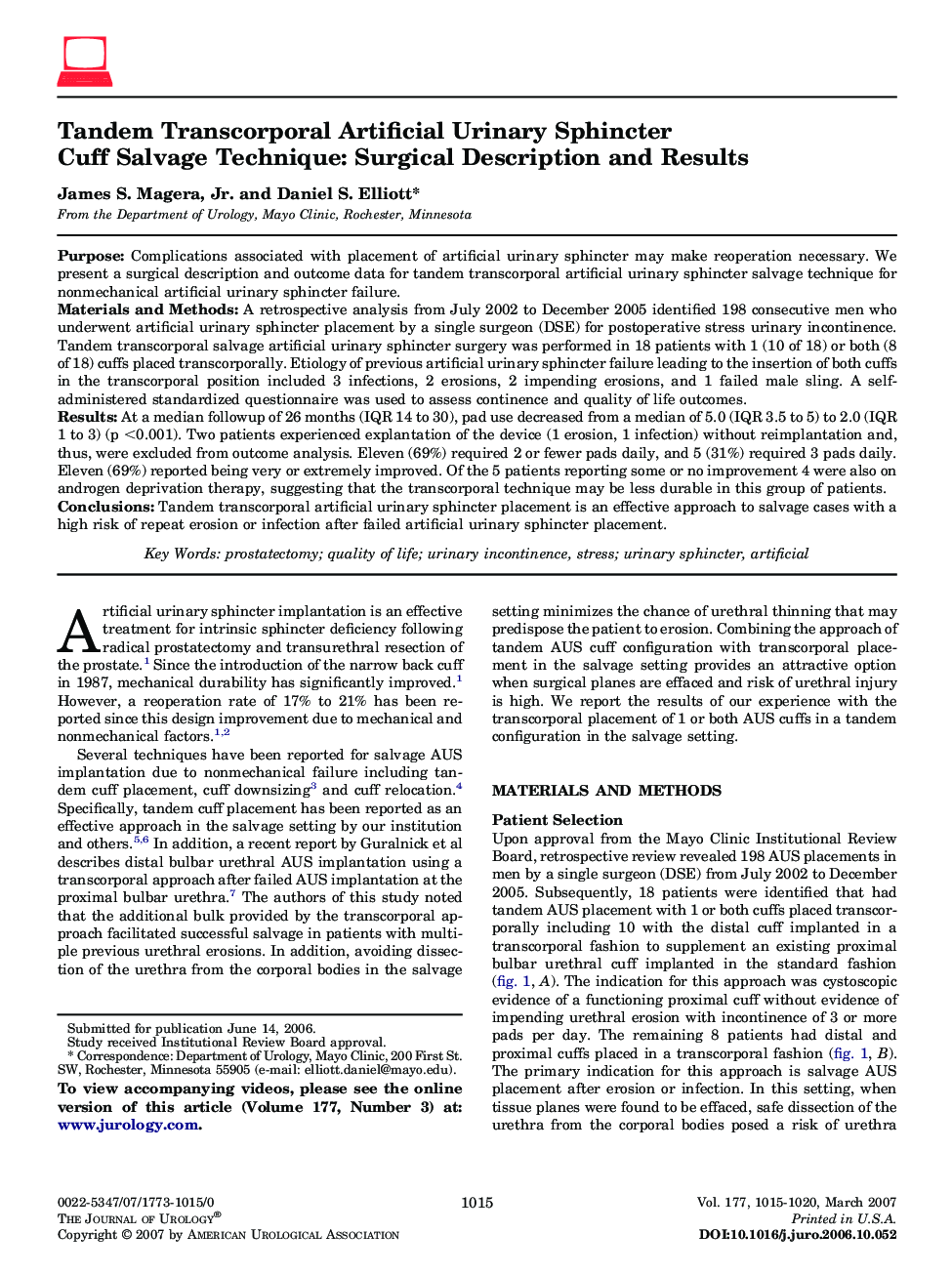| Article ID | Journal | Published Year | Pages | File Type |
|---|---|---|---|---|
| 3878987 | The Journal of Urology | 2007 | 6 Pages |
PurposeComplications associated with placement of artificial urinary sphincter may make reoperation necessary. We present a surgical description and outcome data for tandem transcorporal artificial urinary sphincter salvage technique for nonmechanical artificial urinary sphincter failure.Materials and MethodsA retrospective analysis from July 2002 to December 2005 identified 198 consecutive men who underwent artificial urinary sphincter placement by a single surgeon (DSE) for postoperative stress urinary incontinence. Tandem transcorporal salvage artificial urinary sphincter surgery was performed in 18 patients with 1 (10 of 18) or both (8 of 18) cuffs placed transcorporally. Etiology of previous artificial urinary sphincter failure leading to the insertion of both cuffs in the transcorporal position included 3 infections, 2 erosions, 2 impending erosions, and 1 failed male sling. A self-administered standardized questionnaire was used to assess continence and quality of life outcomes.ResultsAt a median followup of 26 months (IQR 14 to 30), pad use decreased from a median of 5.0 (IQR 3.5 to 5) to 2.0 (IQR 1 to 3) (p <0.001). Two patients experienced explantation of the device (1 erosion, 1 infection) without reimplantation and, thus, were excluded from outcome analysis. Eleven (69%) required 2 or fewer pads daily, and 5 (31%) required 3 pads daily. Eleven (69%) reported being very or extremely improved. Of the 5 patients reporting some or no improvement 4 were also on androgen deprivation therapy, suggesting that the transcorporal technique may be less durable in this group of patients.ConclusionsTandem transcorporal artificial urinary sphincter placement is an effective approach to salvage cases with a high risk of repeat erosion or infection after failed artificial urinary sphincter placement.
